Gamification Incentives: A Smarter Way for Businesses to Boost Performance
Gamification incentives make business performance more engaging by using real-time rewards, leaderboards, and interactive challenges. Learn how businesses can boost motivation, streamline incentive programs, and improve engagement with gamification strategies.
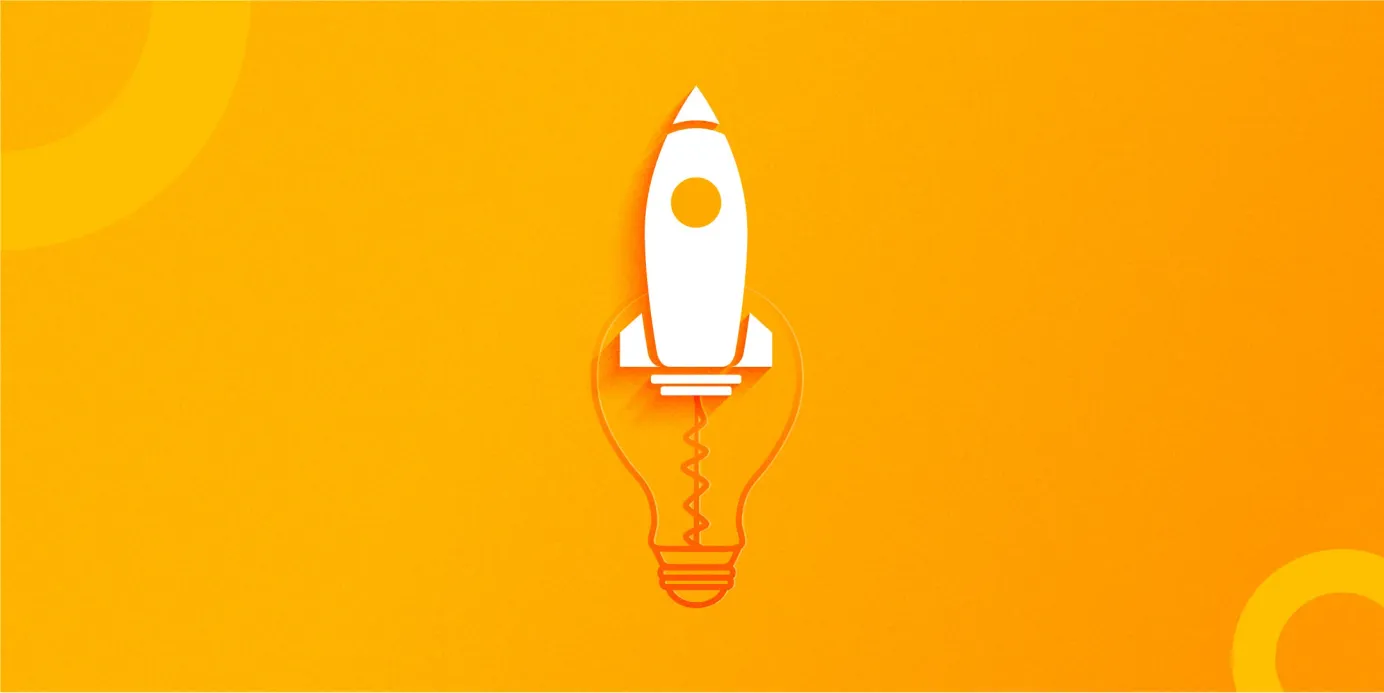
On this page
The workplace has changed. Employees and customers expect engagement, transparency, and instant feedback—traditional incentive programs often fail to deliver. That’s where gamification incentives come in.
Gamification adds game-like elements—points, badges, leaderboards—to everyday tasks. When combined with incentives, it boosts motivation, enhances performance, and encourages participation. Whether it’s sales teams hitting targets, employees completing training, or customers interacting with a brand, gamification incentive programs make work more exciting and rewarding.
Businesses across industries are embracing business gamification to drive productivity and engagement. With real-time tracking, personalized rewards, and interactive challenges, gamification of business is more than just a trend—it’s a proven strategy for long-term success.
Why gamification incentives matter in business
Traditional incentive programs often fail to create lasting motivation. They rely on outdated methods like manual tracking, delayed rewards, and rigid structures that don’t engage employees or customers effectively. In contrast, gamification incentive programs make earning rewards immediate, engaging, and performance driven.
1. Boosts motivation & productivity
Employees perform better when they receive instant recognition. Gamification rewards small achievements in real-time, keeping motivation levels high. According to a TalentLMS survey, 89% of employees say gamification boosts their productivity, while 88% feel happier at work when incentives are gamified.
2. Encourages healthy competition
Leaderboards, milestone-based rewards, and real-time rankings create a sense of friendly competition. Employees stay engaged when they see their progress and achievements compared to peers. This approach transforms routine tasks into an interactive experience that drives better results.
3. Enhances employee retention
A motivated workforce stays longer. When employees feel valued and engaged, they are less likely to leave. Gamification business strategies create a culture where employees feel rewarded for their efforts, leading to higher retention rates.
4. Strengthens customer engagement
Customers love earning points, unlocking rewards, and participating in challenges. Businesses integrating gamification incentive programs into their marketing strategies see higher engagement and brand loyalty.
Businesses create a more dynamic, engaging, and results-oriented work environment by shifting from traditional incentives to gamification-driven rewards.
How gamification incentives improve business performance
Gamification incentives help businesses create an engaging and results-driven environment. By integrating game-like rewards into different aspects of operations, companies can enhance productivity, motivation, and customer interaction.
1. Sales performance and motivation
Sales teams work best when they have clear goals and incentives. Gamification makes targets more engaging by introducing real-time leaderboards, milestone-based rewards, and instant recognition. This approach keeps salespeople motivated and encourages continuous improvement. When employees can see their progress and compare their achievements with their peers, it creates a sense of accomplishment and healthy competition.
Sales teams can track their progress effortlessly, stay motivated with behavioral nudges, and receive instant recognition for achievements. By making sales performance more transparent and engaging, Compass helps businesses drive higher participation and better results.
2. Employee training and development
Training programs often struggle to keep employees engaged. Gamification can change this by incorporating challenges, points, and rewards that make learning more interactive. Employees feel a sense of progress and competition, which encourages them to complete training modules more effectively.
A survey by TalentLMS found that 89% of employees believe gamification boosts their productivity, while 88% say it increases workplace satisfaction. These numbers highlight how gamified training can create a more engaged and knowledgeable workforce.
3. Marketing and customer engagement
Customers respond well to incentives. Businesses that use gamification in their marketing strategies can build stronger relationships and encourage repeat purchases. Loyalty programs that allow customers to earn points, unlock rewards, or participate in interactive challenges can increase engagement and brand loyalty.
Sephora’s “Beauty Uncomplicated” quiz is a great example. Using a swipe-based selection method, the brand simplified the shopping experience and made product recommendations more engaging. This gamified approach helps businesses create a stronger emotional connection with customers.
4. Product innovation and team collaboration
Employees are more likely to contribute ideas when they are recognized and rewarded. Gamification fosters creativity by introducing leaderboards, recognition badges, and rewards for innovative contributions. When employees feel valued, they are more engaged and motivated to bring fresh ideas to the table.
5. Compliance and quality control
Ensuring compliance and maintaining quality standards can sometimes feel like routine obligations. Gamification changes this by introducing challenges and rewards for meeting compliance benchmarks. Employees are more likely to engage with quality control measures when they feel they are working toward an achievable goal.
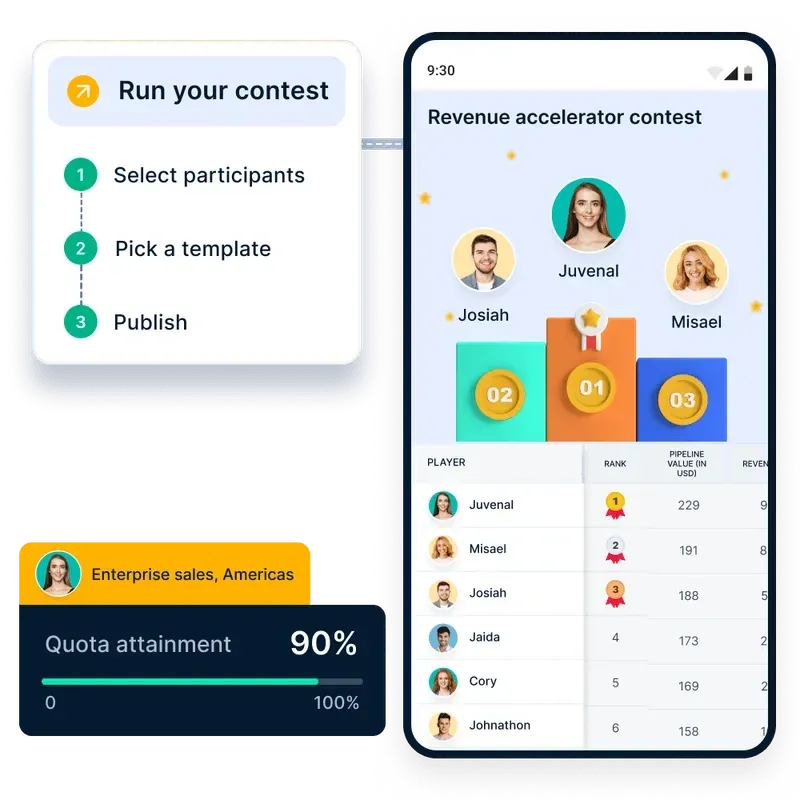
Gamify Sales Performance for Higher Engagement
Turn sales goals into exciting challenges with leaderboards, rewards, and real-time tracking. Compass makes performance management engaging and competitive.
Steps to implement a gamification incentive program in business
A well-structured gamification incentive program requires careful planning and execution. Businesses need to align incentives with their goals, choose the right game mechanics, and track progress to ensure effectiveness.
1. Define business goals
Before implementing gamification, businesses must identify what they want to achieve. Whether the goal is to increase sales, improve employee engagement, enhance customer loyalty, or boost compliance, the incentive structure should align with these objectives.
2. Understand your audience
Gamification must be tailored to the people it is designed for. Employees and customers have different motivations, so businesses should analyze what drives engagement. Sales teams may respond well to leaderboards and milestone-based rewards, while customers may be more attracted to loyalty points and discounts.
3. Choose the right gamification elements
Selecting the right game mechanics is essential. Businesses can create engagement with points, badges, challenges, progress tracking, or real-time leaderboards. The key is to make incentives meaningful and achievable without making the system too complex.
4. Use gamification software
Technology makes it easier to manage incentives. Businesses can use gamification platforms to track progress, automate rewards, and provide real-time updates.
With its no-code program-building capabilities, businesses can design gamification-driven sales programs in minutes, providing instant visibility into incentives and payouts.
5. Test and refine the program
Starting with a small group allows businesses to assess how well gamification works before rolling it out company wide. Gathering feedback and making adjustments ensures that the incentive program remains engaging and effective.
6. Monitor success and make improvements
Tracking key performance metrics helps measure the impact of gamification incentives. Businesses should analyze participation rates, employee performance, and customer engagement levels to see whether the program meets its objectives. Updating challenges or rewards can help maintain interest if engagement starts to drop.
Challenges in gamification incentives programs and how to overcome them
While gamification incentives can enhance engagement and performance, businesses must address certain challenges to ensure long-term success.
1. Ensuring relevance and purpose
Gamification incentives should align with business goals and employee motivations. Simply adding points, badges, or rewards without a clear purpose can lead to disengagement. Businesses need to design incentive programs that reward meaningful actions and contribute to overall growth.
2. Balancing competition and collaboration
While competition can be a strong motivator, excessive rivalry may create stress or discourage teamwork. Businesses should balance leaderboards with collaborative challenges where employees work together toward a shared goal. Encouraging peer recognition alongside competition fosters a healthier work environment.
3. Sustaining long-term engagement
Gamification strategies often lose effectiveness over time as employees or customers grow accustomed to them. To maintain engagement, businesses should refresh challenges, introduce new rewards, and personalize incentives based on user preferences.
4. Managing complexity in implementation
Designing and managing an effective gamification program can be challenging, especially for large teams. Compass simplifies this process by providing a no-code gamification platform that allows businesses to create incentive programs in minutes. It offers real-time leaderboards, automated tracking, and instant payouts, making managing gamification easier.
5. Providing real-time visibility
Delayed or inaccurate incentive tracking can frustrate employees and reduce motivation. Compass helps businesses eliminate this issue by offering real-time performance updates and instant reward calculations, ensuring employees always know where they stand in incentive programs.
Addressing these challenges ensures that gamification remains an effective and engaging business strategy.
How Compass enhances gamification incentives in business
Gamification incentives work best when they are transparent, engaging, and easy to track. However, many businesses struggle with outdated systems that make managing incentives complex and time-consuming. Compass solves this by providing a real-time, automated gamification platform that makes incentive programs more effective and engaging.
Bringing real-time rewards and visibility
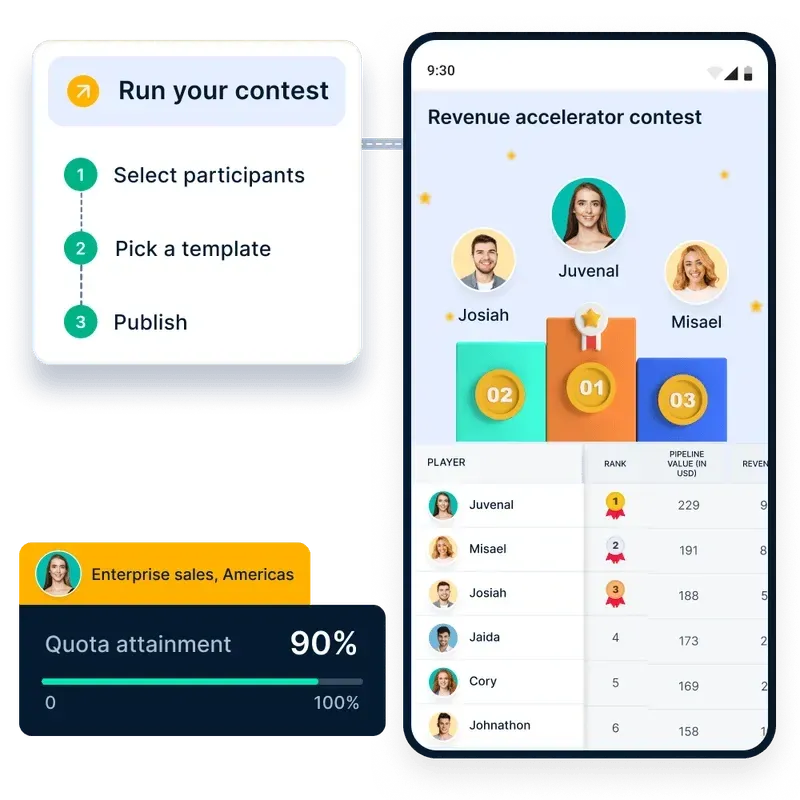
One of the biggest challenges in traditional incentive programs is delayed or unclear payouts. Compass eliminates this issue by providing real-time performance tracking and instant reward calculations, so employees always know where they stand. This level of transparency boosts motivation and ensures that incentives drive consistent performance.
Making sales incentives more engaging
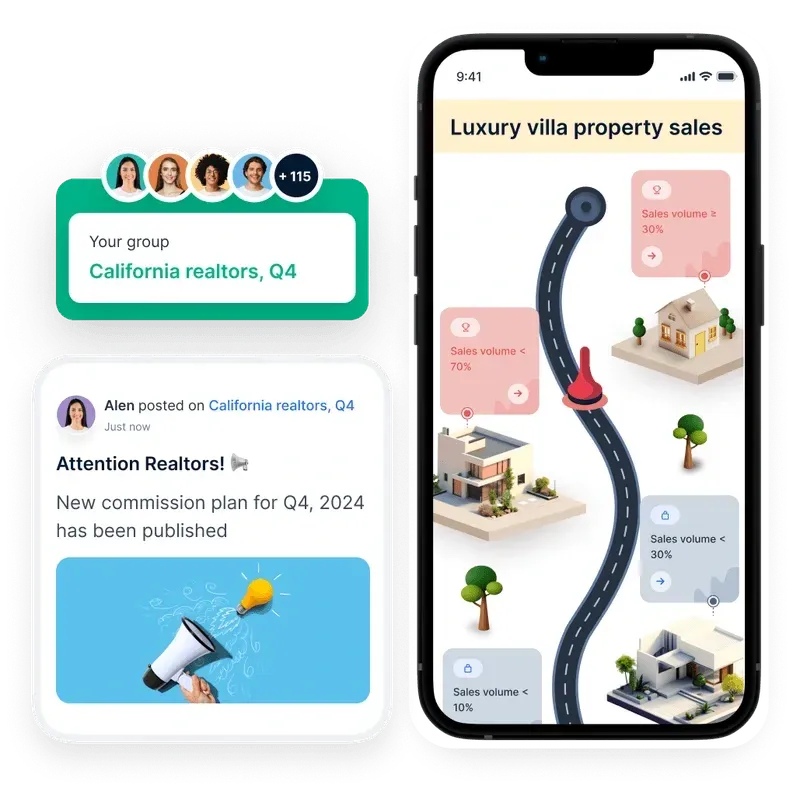
Sales teams thrive on competition, but without the right tools, leaderboards and contests can be difficult to manage. Compass offers interactive game templates, milestone-based incentives, and leaderboards that keep employees engaged and motivated. By gamifying sales targets, businesses can create a high-energy environment that pushes teams to perform at their best.
Simplifying incentive management
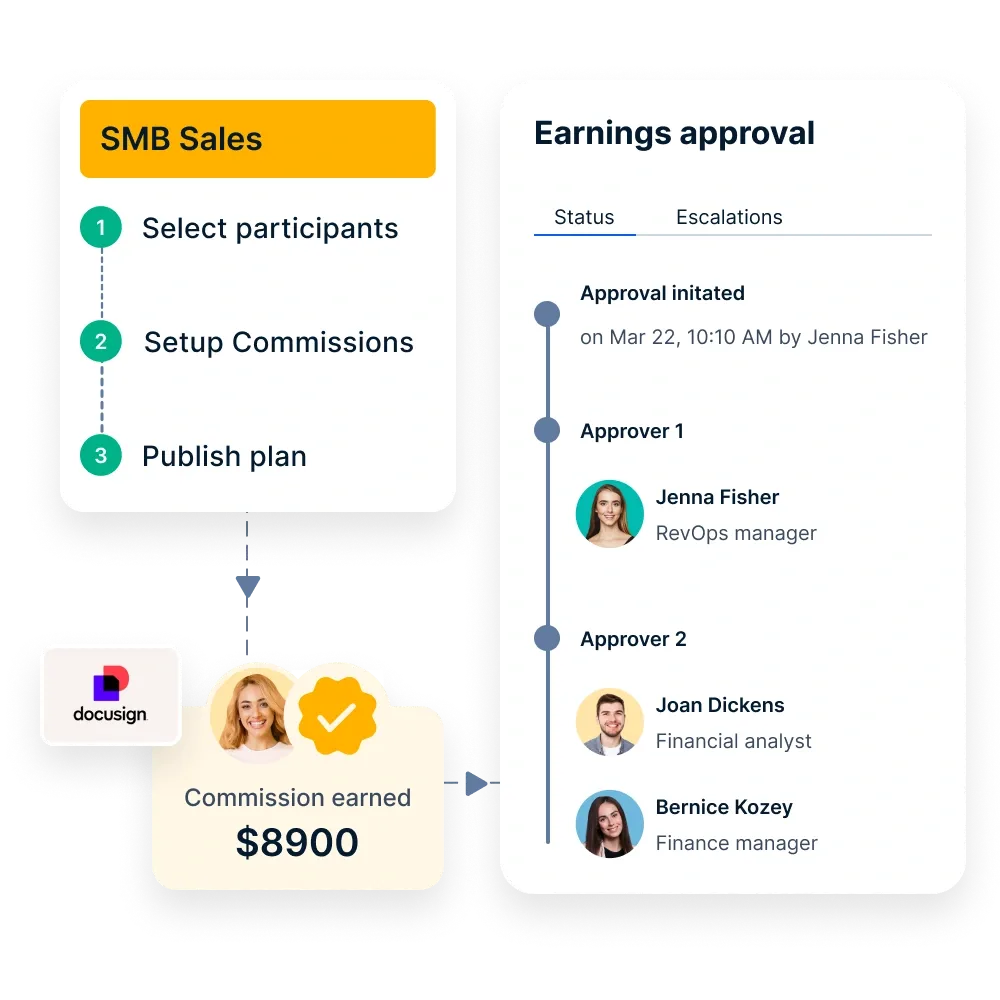
Managing incentives manually through spreadsheets or outdated tools leads to inefficiencies and errors. Compass automates the entire process, from defining program rules to tracking progress and distributing rewards. This saves time for managers and ensures that incentives are delivered accurately.
Driving long-term engagement
Gamification incentives often lose effectiveness if they become repetitive. Compass helps businesses keep incentives fresh with customizable challenges, behavioral nudges, and a vast reward catalog. By continuously evolving the gamification experience, companies can maintain long-term engagement and productivity.
By integrating Compass, businesses can move away from outdated incentive models and embrace a gamification-driven approach that keeps employees motivated, engaged, and consistently performing at their peak.
Conclusion: The future of gamification incentives in business
Gamification incentives are redefining how businesses engage employees and customers. By integrating real-time rewards, challenges, and performance tracking, companies can drive motivation and productivity more effectively than traditional incentive programs.
Unlike outdated methods that delay recognition, gamification provides instant feedback, fosters healthy competition, and keeps engagement high. Whether in sales, training, customer loyalty, or compliance, businesses can create more rewarding experiences.
Platforms like Compass simplify gamification by automating tracking, enabling real-time leaderboards, and streamlining rewards. As more companies embrace technology-driven engagement strategies, gamification will become essential for performance management and workplace motivation.






